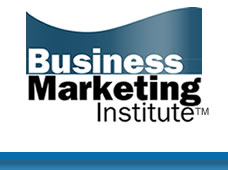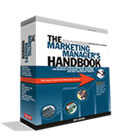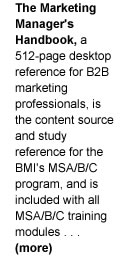


Tuesday Marketing Notes (Number 71—February 27th, 2007)
A B2B Marketing Newsletter for BMA Members
____________________________________________________________
MAKE SURE YOU CONTINUE TO RECEIVE EACH ISSUE OF TUESDAY MARKETING NOTES—CLICK HERE TO RENEW YOUR FREE SUBSCRIPTION
(NOTE: if you’ve already signed up previously at this link above, no need to do so again)
INDEX TO PAST ISSUES OF TUESDAY MARKETING NOTES:
Click here
Special Savings Promotion for BMA Members—Click here
–––––––––––––––––––––––––––––––––––––––––––––––––––––––
Targeting a New Market (Part 6: Five Keys to Starting Smart with a Print Advertising Program in Your New Market Launch—1)
by Eric Gagnon
Last week we addressed some of the key principles involved in Internet marketing methods for new market launches. This week, let’s talk about how to use print advertising to launch your product in a new market.
There are two ways to start a print advertising program: The dumb way, and the smart way. The dumb way to is roll out immediately with a six-month schedule of full page ads alongside your direct mailings or other marketing activities in your plan, without having any basis in knowing whether or not the copy, positioning, and presentation of those ads will generate enough response to make them pay.
This is dumb because print advertising is an inherently dumb marketing medium. Whenever you advertise, you run the risk of spending a lot of money in rather costly, inflexible increments (ad page sizes and issue dates) to broadcast your selling message to every reader in that publication, when most of these readers don’t care about, and don’t need, your product.
Compared to other marketing methods, the limited space available in the print advertising medium, even when using full page ad sizes, makes it more difficult to effectively communicate sales content and promotional offers that can drive substantial sales response—leads, inquiries, and (in some cases) orders. For business-to-business marketing, other marketing methods are usually better than print advertising for generating sales response. For example:
• A direct mail piece containing a sales letter and double-sided brochure offers much more real estate for describing features and benefits. With direct mail, you can build or buy mailing lists targeted to specific individuals, send them a detailed package of information on your product (a mailing piece), and even follow up with them by phone, if you have their phone numbers;
• Internet paid search programs can also be more cost-effective than print advertising. You can put your ads right next to the keywords your potential prospects are searching for, and your Web landing pages, tied to PPC (pay-per-click) search programs, also give you more space for presenting and selling your product than print advertising;
• With trade shows, you can draw potential prospects to your company’s trade show booth, and your sales reps can talk with them, face to face
Compared to print advertising, all of these other marketing activities have the benefit of allowing you to scale your marketing program up as you gain confidence in the pulling power of messaging, positioning, and promotion. Even when starting small, running a print advertising program for a two- or three- issue run in a publication requires a minimum buy-in marketing expense that’s a two or three month sunk cost in your marketing program.
With almost any other marketing activity, you can spend a little money to start small, for example, by running a test mailing against a list sample, or testing an AdWords program. By contrast, running a print advertising program is expensive, even for smaller page sizes, and you usually need to place ads across at least two or three issues of a publication to draw maximum response.
Print ads also tend to be less accurately measurable. Where response from direct mail pieces can be logged by key code, and clicks from your AdWords text ads are recorded with high precision, readers often forget which ad they saw in what publication that prompted them to contact your company.
Does this mean that print advertising doesn’t work, or that you shouldn’t run print advertising? Not at all. But the way that most companies who use print advertising to launch products in new markets, and the agencies who serve them, tend to make clumsy advertising decisions. They tend to front-load their marketing plans with heavy print advertising schedules before they even know if the presentation and content of their ads will pull sales response. And learning “what works” in a marketing program better can be done better and cheaper through the other methods we’ve already covered—direct mail, trade shows and Internet marketing.
This week we’ll cover the first two of five guidelines you will find useful to follow when planning, executing, and managing your print advertisig projects for a new market launch . . .
1.) Don’t run a full-page ad when a smaller size can work just as well
Ad size is the first major consideration in planning and budgeting for print advertising programs, since the first pain you feel in running an ad program is when you read those full-page ad rates on the publication’s rate card.
Obviously, a large company can bear this pain better than a smaller one, and big companies may always choose to run full pages by default in their advertising schedules. However, unless you work with a large company that must be concerned about its brand image, and in meeting the expectations of its major partners and accounts, like a Cisco, IBM, Siemens, or Avaya, you don’t need to be running full page ads, and you are likely to get more for your marketing dollars by going with smaller ad sizes, and amping up your layout and sales messaging to make a smaller ad work just as well or better than a larger ad.
All things considered, for small and mid-sized companies in B2B—and these are most of the companies we work for and with as marketing professionals—I’d think twice about running full page ads, even for new market launches. Why?
First, almost any other marketing method is less risky and more effective at generating solid, measurable sales response compared running print advertising programs, as we’ve already discussed.
Second, many small and mid-sized companies and clients just can’t afford to take a chance on spending a lot of their money to run big ads that don’t pull response. The demand for sales response and measurability in advertising among CEOs and business owners, seen in new advertising media like paid Internet search, where response can be measured with precision by clicks and completed transactions, marks the beginning of the end for smooth ad space salespeople and ad agency operators pushing wall-to-wall “awareness building” print ad buys. If you’re not one of those agencies, you’ll enjoy taking business away from these guys when their clients wake up and realize you can show them better, more accountable ways to market their products.
Most important, by using techniques of bold, clear presentation, you can make a small page size pull just as much, and usually more, sales response than most full-page ads in many trade publications. With extra care paid to copy and layout, you can make your junior, half, third, quarter, and even tiny one-eighth size ads demand attention and move interested readers to your offer—their next step closer to buying your product.
So starting smart with you print advertising program means starting with the realization that you don’t need to be running full-page ads to run an effective advertising program (crafting effective fractional ads is an important topic that we’ll address in TMN 73, coming up in two weeks).
2.) Use a hard offer for a free premium to draw sales response now, instead of “brand awareness” later
Most people who write about marketing talk about how print advertising builds “brand awareness.” Sure, you might get a mildly favorable side benefit when readers notice your ads and remember your product, but hard, measurable sales response is what keeps your sales team busy pursuing the quality leads you generate from your ad programs, and, if you’re on the agency side, keeps your clients happy.
Once your headline and sales copy draws a reader to your print ad, the way to generate sales response—leads, inquiries, and orders—is to make a hard, actionable offer to the potential prospects in your new market:
• A savings offer or discount for first-time buyers;
• A free estimate, sample, or trial offer;
• A book, white paper, or technical report that is useful and compelling to the prospects in your market;
• A technical aid that is specialized to your market, such as software, an instructional video, technical calculation tool, wall chart, or other “tool of the trade” for the individuals working in your new market
Free premiums are an item of exchange that gives your potential prospect something that is useful and relevant to them, in exchange for them giving you their contact information. Tie this free premium to a hard “call to action” that tells your reader what you want them to do next: Call your company, your distributor, or link to a dedicated, measureable Web URL on your company’s Web site (i.e., www.yourcompany.com/report1)
Comments? Questions? Send them to me at: eric@realmarkets.net
_____________________________________________________________
Eric Gagnon (eric@realmarkets.net), is president of GAA (www.realmarkets.net), a sales and business development consulting firm, and is the author of The Marketing Manager’s Handbook, the master study guide for the Business Marketing Association’s Marketing Skills Assessment, Skill Builder, and Certification (MSA/B/C) programs.
For more information on The Marketing Manager’s Handbook, available to BMA members at a special discount, link to:
http://www.businessmarketinginstitute.com/book.html
_____________________________________________________________
Test, Train, and Build Your B2B Marketing Skills for Better Sales Success: BMA Announces New Assessment, Training, and Certification for B2B Marketing Managers
For more information on the new BMA Marketing Skills Assessment, Skill Building and Certification (MSA/B/C) training and professional development program, visit http://www.businessmarketinginstitute.com






